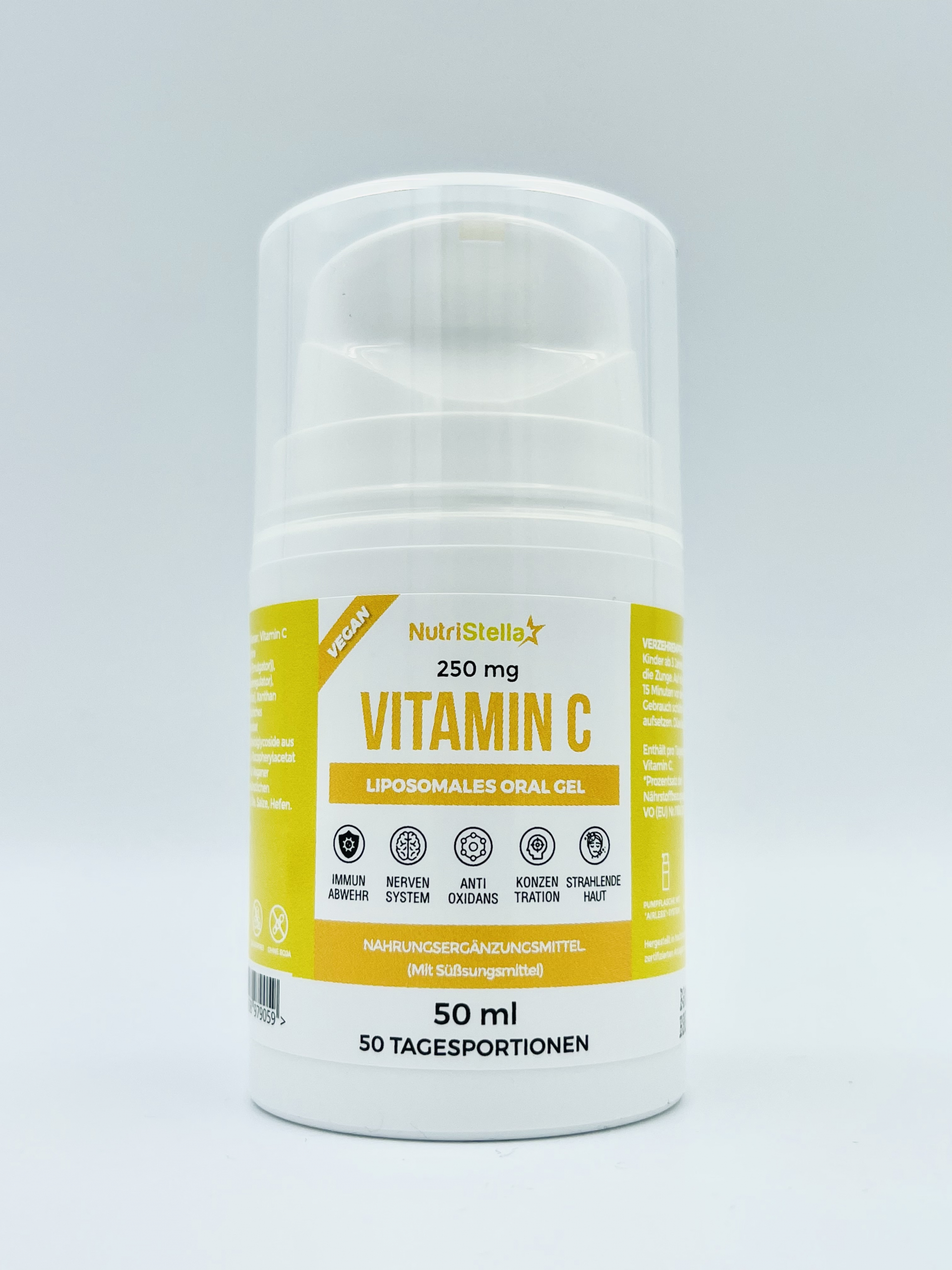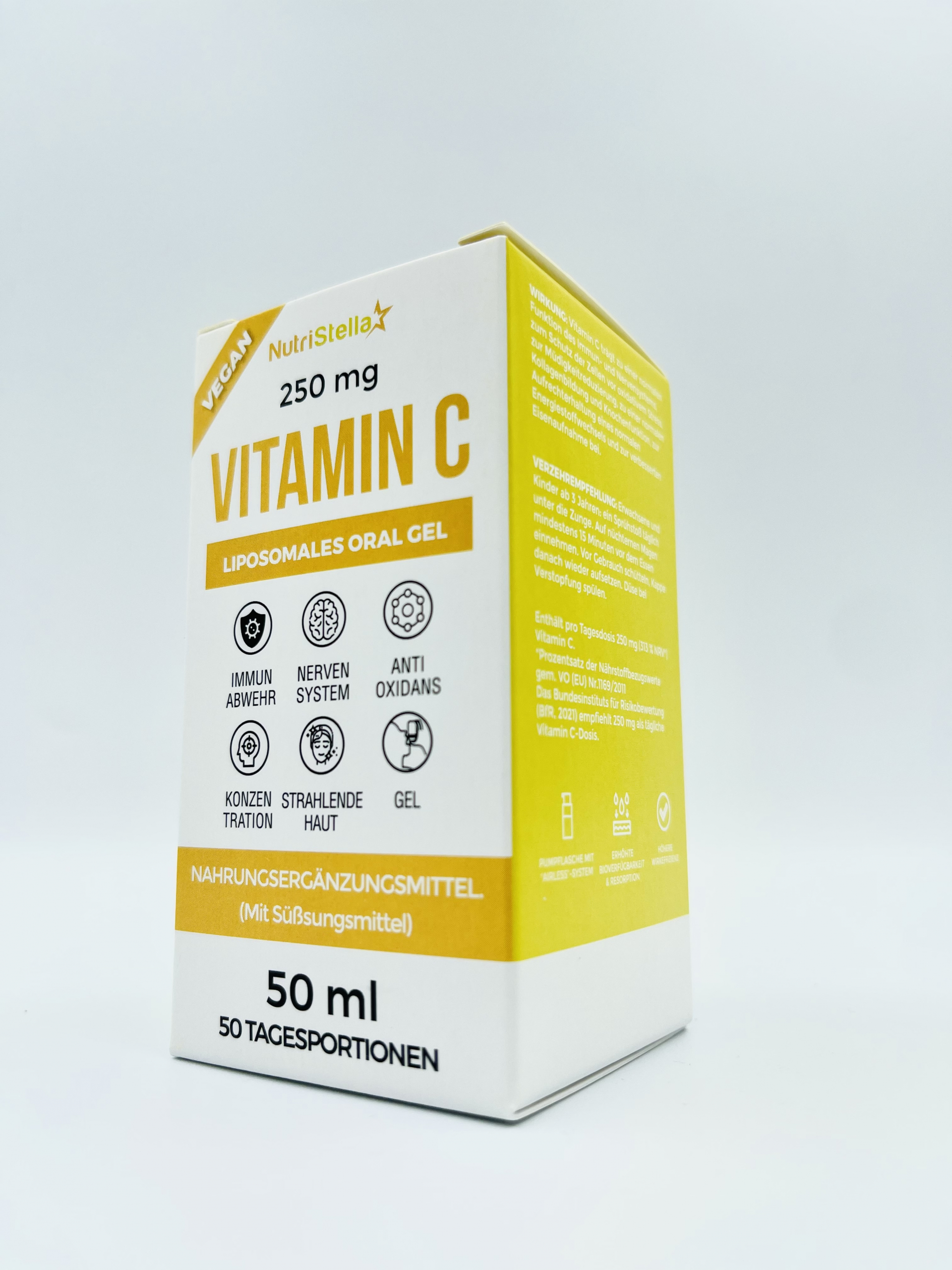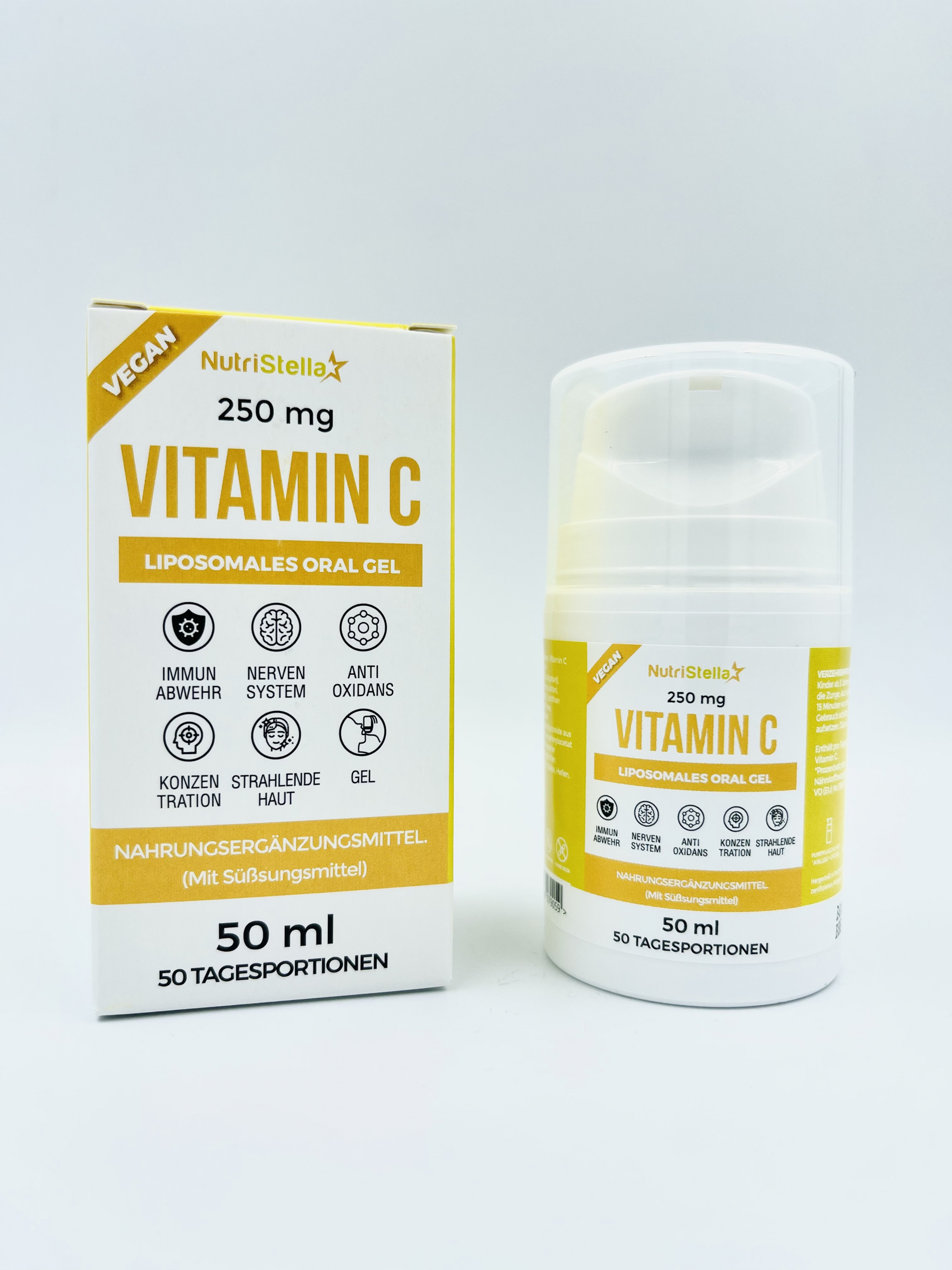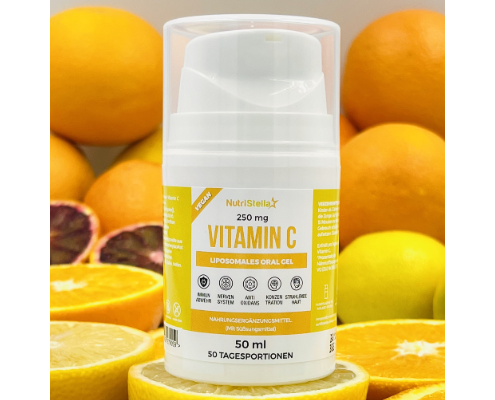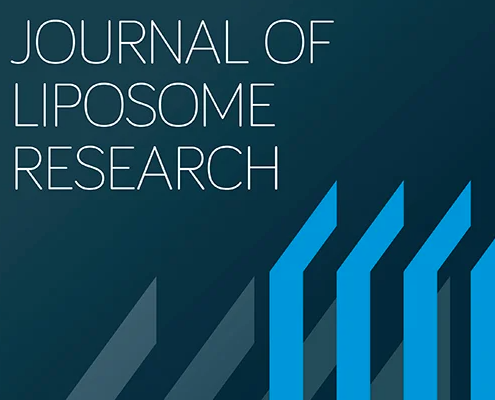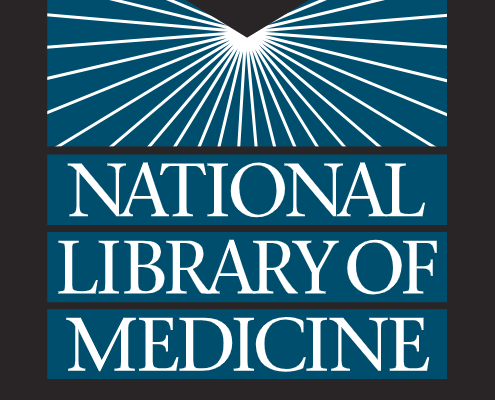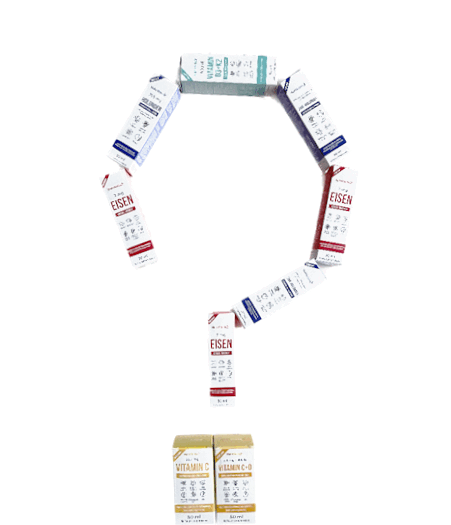Vitamin C (ascorbic acid), a water-soluble micronutrient, is required for normal cellular functions, growth, and development. Although most mammals synthesize vitamin C in the liver, during the course of evolution, humans have lost the ability to make vitamin C and must obtain it from diet. The lack of intristic supply and regulation causes a large proportion of the human population to be in a state of various levels of permanent or transient deficiencies. As vitamin C is a potent antioxidant, acting as a free radical scavenger, critical iron homeostasis promotor and an essential cofactor in numerous, vital enzymatic reactions, therefore even moderate deficiency can have serious health consequences.
Given the growing burden of western diet, pollution and stress inducing inflammation and oxidative damage, potential protective effects of vitamin C against cardiovascular diseases, a range of malignancies and multiple infectious diseases, improving vitamin C intake may prove to be a cheap and effective health intervention.
Liposomal technology offers enhanced absorption of vitamin C preventing the ascorbic acid molecules from degradation and thus improving its bioavailability and efficiency.
Vegan. Free from lactose, gluten, and GMO. Enjoyable taste. Tooth-friendly formula (sugar-free). Long-lasting. Enhanced bioavailability and absorption.
BODY/IMPORTANCE
The disease caused by vitamin C deficiency is called scurvy. It can lead to anemia, exhaustion, spontaneous bleeding, limb pain, swelling, and sometimes ulceration of the gums and loss of teeth. Further clinical abnormalities resulting from Vitamin C deficiency include delayed or impaired wound healing, bone and connective tissue disorders and vasomotor instability.
The total body content of vitamin C ranges from 300 mg (at near scurvy) to about 2 g (normal levels). High levels of vitamin C are maintained in cells and tissues (97%), and are highest in leukocytes (white blood cells), eyes, adrenal glands, pituitary gland, and brain. Relatively low levels of vitamin C are found in extracellular fluids (3%), such as plasma, red blood cells, and saliva.
Since humans cannot synthesize their own vitamin C it should be absorbed by mucosa and carried through the circulation to the various organs. The intricate system of ascorbic acid fluxes in the human body prevents excessive fluctuation of its concentrations inside cells as required by metabolic processes.
Approximately 70%–90% of vitamin C can be absorbed at moderate intakes of 30–180 mg/day. However, at doses above 1,000 mg/day, absorption falls to less than 50%. The supplementation exhibits low toxicity since kidneys remove any excess of vitamin C preventing overdose.
The vitamin C blood concentration, in addition to supply and elimination, also depends on redistribution. During times of low dietary intake, vitamin C is reabsorbed by the kidneys rather than excreted. This process prevents from deficiency during malnutrition periods.
The D-A-CH (German-Austrian-Swiss) Nutrition Societies provide intake recommendations of between 30 and 85 mg per day for 4- to under 15-year-old children. For older children and adolescents as well as for adults, age- and gender-dependent intake recommendations were derived: for 15- to under 19-year-olds 90 mg per day (female) and 105 mg per day (male), and for adults (19 to 65 years and older) 95 mg per day (female) and 110 mg per day (male). For pregnant women (from the 4th month of pregnancy) and for lactating women, 105 mg and 125 mg per.
The German Federal Institute for Risk Assessment (BfR) recommends an upper limit of 250 mg (800 IU) of vitamin C per daily dose of a dietary supplement.
WHO IT’S FOR
Deficiency
Vitamin C deficiency manifests symptomatically after 8 to 12 weeks of inadequate intake and presents as irritability and anorexia. A deficiency may result from:
- a poor diet lacking in fresh fruits and vegetables inc. western di
- illnesses such as anorexia and other mental health issues
- restrictive diets due to allergies, difficulty orally ingesting foods or other reasons
- older age
- type 1 diabetes who have high vitamin C requirements
- disorders of the GI (gastro-intestinal) tract like inflammatory bowel disease
- iron overload, which leads to the wasting of vitamin C by the kidneys
- excessive consumption of alcohol or use of certain substances
- cigarette smoking and exposure to secondhand smoke
- late or unsuccessful weaning of infants can also lead to scurvy
- polluted air
Deficiency symptoms
Early signs:
- loss of appetite,
- weight loss,
- fatigue,
- irritability
- lethargy
Within 1-3 months, there may be signs of:
- anemia
- myalgia, or pain, including bone pain
- swelling, or edema
- petechiae, or small red spots resulting from bleeding under the skin
- corkscrew hairs
- gum disease and loss of teeth
- poor wound healing
- shortness of breath
- mood changes, and depression,
Overdosing
Even at high doses, vitamin C is not known to be toxic or to cause any serious adverse effects. The excess of Vitamin C is excreted in the urine.
Overdosing symptoms
The most common side effect of high vitamin C intake is digestive distress. The most common digestive symptoms of excessive vitamin C intake are diarrhea and nausea.
High vitamin C intake is not only associated with greater amounts of urinary oxalate but also linked to the development of kidney stones.
Due to its acidity conventional Vitamin C may be harmful for people prone to acid reflux.
HOW TO USE
NutriStella Liposomal Vitamin C
DIRECTIONS: Adults and children over 3 years of age: one spray per day under the tongue. Take on empty stomach, at least 15 min before eating. Before first use, press the pump 2-3 times until the contents appear. Shake before use. Rinse nozzle with water when congested.
Please note
Because vitamin C is water-soluble, traditional supplements are best absorbed on an empty stomach—either 30 minutes before a meal or 2 hours after. However, there is controversy regarding whether vitamin C should be taken without food due to its irritation properties. Many vitamin C manufacturers advise compromising on absorption for the benefit of patient comfort. Notably, this is not a concern with NutriStella products.
Vitamin C can also be taken in supplemental form at any time during the day. While there isn’t enough evidence to specifically support taking vitamin C at night, individuals with low vitamin C levels often experience sleep quality deprivation. It appears safe to take vitamin C before the evening, as it may boost energy levels, potentially making it difficult to fall asleep.
Exercise caution when taking Vitamin C with other substances, such as medications, as its potent antioxidant properties may alter their effectiveness.
Vitamin C Absorption Enhancers
The only scientifically proven boosters of Vitamin C absorption are liposomes.
Vitamin C is prone to degradation in the gastrointestinal tract, particularly in the presence of metal ions. Encapsulated in liposomes—small, spherical lipid-based structures consisting of one or more bilayer phospholipids—Vitamin C retains its properties. Liposomes not only reduce vitamin C degradation, slow down its release, and enhance absorption, but also mitigate potential disturbances in gastrointestinal tract functioning. Research shows that liposomal formulas demonstrate 2x better absorption than conventional Vitamin C formulas.
Our liposomal spray formulations outperform ingested liposomal forms like tablets or capsules because they are rapidly absorbed via the oral mucosa, bypassing the traditional gastrointestinal route. Vitamin absorption through the oral mucosa is 3-5 times greater than the conventional route.
Vitamin C Absorption Inhibitors:
Vitamin C is transported through the intestine via both glucose-sensitive and glucose-insensitive mechanisms. The presence of large quantities of sugar in the intestine can slow absorption from the gastrointestinal tract. Additionally, consuming sugar introduces more free radicals to the body that Vitamin C may sacrifice itself to neutralize, instead of neutralizing the free radicals in other areas of the organism. So, even if Vitamin C gets absorbed, it may not be put to optimal use. se
The bioavailability of vitamin C is often reduced in conditions such as stress, alcohol intake, smoking, fever, viral illnesses, the use of antibiotics and painkillers, exposure to petroleum products or carbon monoxide, and heavy metals toxicity.
INGREDIENTS
Purified water, Vitamin C (L-ascorbic acid), sunflower lecithin (emulsifier), sodium bicarbonate (acidity regulator), glycerol (humectant), steviol glycosides (sweetener), xanthan gum (thickener), potassium sorbate (preservative), α-tocopheryl acetate (antioxidant), natural lemon flavouring.
Suitable for vegans. Does not contain artificial flavourings, colors, oils, salt, yeast. Lactose, gluten and GMO free.
Tastes good
Tooth friendly formula (sugar-free)
Long lasting
NutriStella Liposomal Vitamin C has an almost neutral pH and is therefore mild for mucosa and the digestive system. Not buffered with calcium, it is a wise choice for individuals with cardiovascular issues or those already supplementing with calcium.
Vitamin C, being the most volatile vitamin, is easily degraded by temperature, humidity, and oxygen during storage. The combination of liposomes and the air-free bottle effectively protects NutriStella Vitamin C from deterioration.
WHY NUTRISTELLA PRODUCT
STRENGTHENED IMMUNITY – Vitamin C supports the body during times of malaise, fortifying the immune system and promoting overall well-being. Its supplementation is particularly crucial in autumn and winter when the body faces increased risks.
HIGH ABSORPTION – Liposomal vitamin C, in gel form, is highly bioactive. The liposomal structure shields ascorbic acid molecules from digestive breakdown, facilitating swift entry into the bloodstream. Moreover, absorption through the oral mucosa improves absorption parameters. Rather than opting for unnecessarily high doses that the body excretes, prioritize quality and effectiveness.
STOMACH-FRIENDLY – The liposome structure not only enhances absorption but also safeguards the stomach and digestive system from potential unpleasant side effects associated with vitamin C intake.
STRONG ANTIOXIDANT – Vitamin C exhibits potent antioxidant properties, positively influencing skin health, collagen production, and bone function. It is recommended for those combating stress and aiming to improve energy metabolism and iron absorption.
HIGH DOSAGE – At 250 mg, this product adheres to the maximum daily dose of vitamin C for food supplements, as per updated recommendations from the Federal Institute for Risk Assessment. These guidelines consider both the body’s vitamin C needs and dietary intake in Germany.

